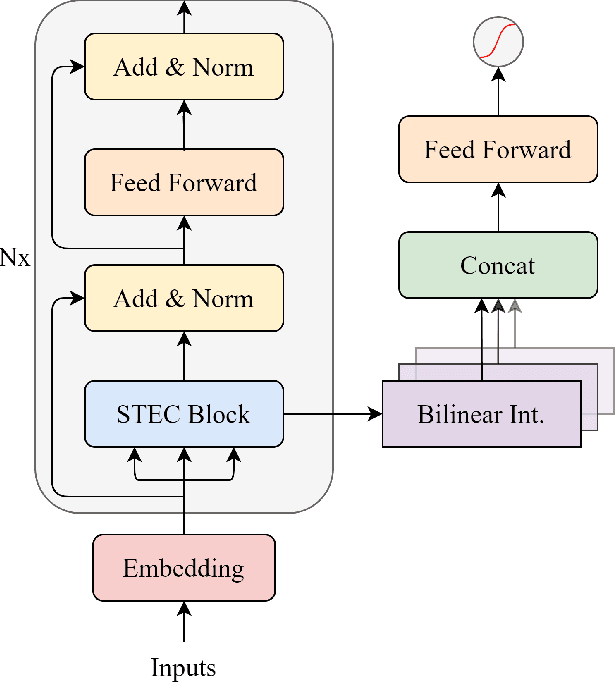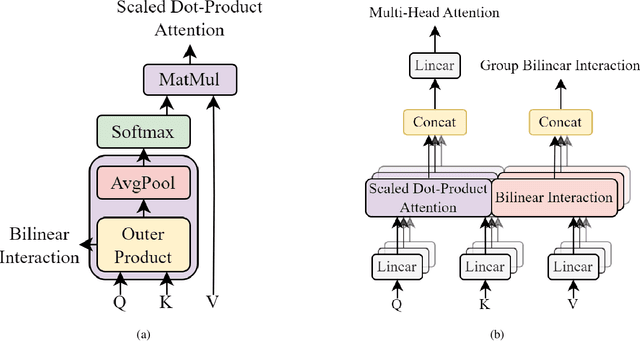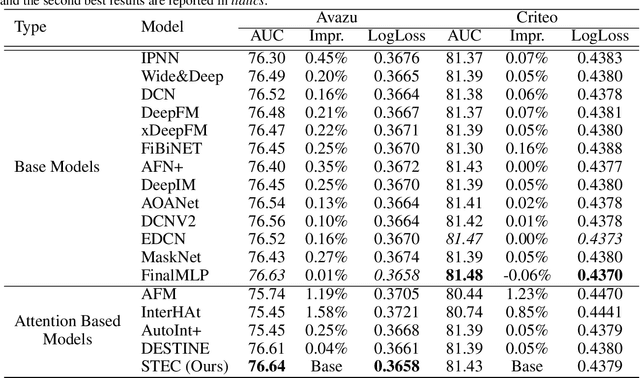Serdarcan Dilbaz
STEC: See-Through Transformer-based Encoder for CTR Prediction
Aug 29, 2023



Abstract:Click-Through Rate (CTR) prediction holds a pivotal place in online advertising and recommender systems since CTR prediction performance directly influences the overall satisfaction of the users and the revenue generated by companies. Even so, CTR prediction is still an active area of research since it involves accurately modelling the preferences of users based on sparse and high-dimensional features where the higher-order interactions of multiple features can lead to different outcomes. Most CTR prediction models have relied on a single fusion and interaction learning strategy. The few CTR prediction models that have utilized multiple interaction modelling strategies have treated each interaction to be self-contained. In this paper, we propose a novel model named STEC that reaps the benefits of multiple interaction learning approaches in a single unified architecture. Additionally, our model introduces residual connections from different orders of interactions which boosts the performance by allowing lower level interactions to directly affect the predictions. Through extensive experiments on four real-world datasets, we demonstrate that STEC outperforms existing state-of-the-art approaches for CTR prediction thanks to its greater expressive capabilities.
MMBAttn: Max-Mean and Bit-wise Attention for CTR Prediction
Aug 25, 2023



Abstract:With the increasing complexity and scale of click-through rate (CTR) prediction tasks in online advertising and recommendation systems, accurately estimating the importance of features has become a critical aspect of developing effective models. In this paper, we propose an attention-based approach that leverages max and mean pooling operations, along with a bit-wise attention mechanism, to enhance feature importance estimation in CTR prediction. Traditionally, pooling operations such as max and mean pooling have been widely used to extract relevant information from features. However, these operations can lead to information loss and hinder the accurate determination of feature importance. To address this challenge, we propose a novel attention architecture that utilizes a bit-based attention structure that emphasizes the relationships between all bits in features, together with maximum and mean pooling. By considering the fine-grained interactions at the bit level, our method aims to capture intricate patterns and dependencies that might be overlooked by traditional pooling operations. To examine the effectiveness of the proposed method, experiments have been conducted on three public datasets. The experiments demonstrated that the proposed method significantly improves the performance of the base models to achieve state-of-the-art results.
 Add to Chrome
Add to Chrome Add to Firefox
Add to Firefox Add to Edge
Add to Edge